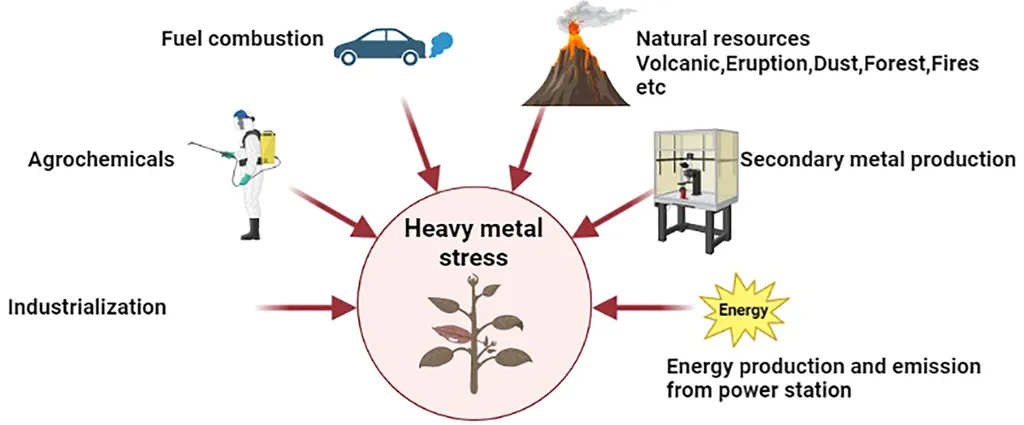In the heart of Seoul, a groundbreaking study led by Jin Ju Lee from the Department of Agricultural Biotechnology at Seoul National University is shedding light on the intricate dance between heavy metals, soil, and soybean crops. The research, published in the journal “Ecotoxicology and Environmental Safety” (translated as “Environmental Safety and Ecotoxicology”), is unraveling the complex interactions that could have significant implications for agriculture and, by extension, the energy sector.
Soybeans, a crucial crop for food and biofuel production, are particularly sensitive to soil contaminants like arsenic and cadmium. Lee’s study delves into how different species of arsenic [As(III) and As(V)] and cadmium [Cd(II)] affect the nitrogen cycle in soybean cultivation. The nitrogen cycle is a vital process that converts nitrogen into forms that plants can absorb, and disruptions to this cycle can severely impact crop productivity.
The research reveals that arsenic and cadmium have markedly different effects on the nitrogen cycle. Arsenic, particularly in its As(III) form, is oxidized by manganese oxides and bacteria, leading to an accumulation in the roots and nodules of soybean plants. This oxidation process promotes the reduction of nitrate (NO₃⁻) to nitrite (NO₂⁻), increasing the concentration of toxic NO₂⁻ in the soil porewater. “As(III)-oxidizing bacteria play a crucial role in this process,” explains Lee, “and their activity can significantly alter the nitrogen dynamics in the soil.”
In contrast, cadmium has a more direct impact on ammonia-oxidizing bacteria (AOB), which are essential for the nitrification process. Cadmium exposure can reduce nitrification by up to 68%, severely impairing the soil’s ability to convert ammonia into nitrates, a form of nitrogen that plants can readily absorb.
The study also highlights the role of arsenic speciation in nitrogen fixation, a process where atmospheric nitrogen is converted into ammonia by nitrogen-fixing bacteria in the soil. Arsenic (V) mimics molybdate (MoO₄²⁻) and inhibits iron uptake, blocking the accumulation of molybdenum and iron in the nodules and suppressing nitrogenase activity by up to 79%. “This inhibition can severely limit the plant’s ability to fix nitrogen,” says Lee, “and ultimately reduce crop yields.”
The findings underscore the importance of understanding the specific interactions between heavy metals and the nitrogen cycle. For the energy sector, which relies heavily on biofuels derived from crops like soybeans, this research could be a game-changer. By developing strategies to mitigate the effects of heavy metals on the nitrogen cycle, farmers and agronomists can improve crop productivity and ensure a steady supply of biofuel feedstocks.
Moreover, the study provides a comprehensive framework for future research into the restoration of biological nitrogen fixation in contaminated soils. “Our findings highlight the need for targeted approaches to address the unique challenges posed by different heavy metals,” Lee notes. “This knowledge is essential for developing effective remediation strategies and ensuring sustainable agriculture.”
As the world grapples with the dual challenges of food security and climate change, research like Lee’s offers a beacon of hope. By unraveling the complex interactions between soil, metals, and plants, scientists are paving the way for innovative solutions that can enhance crop productivity and support the transition to a more sustainable energy future.

